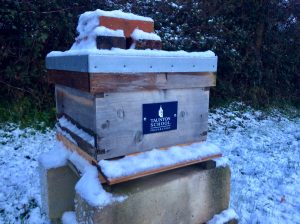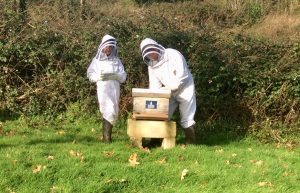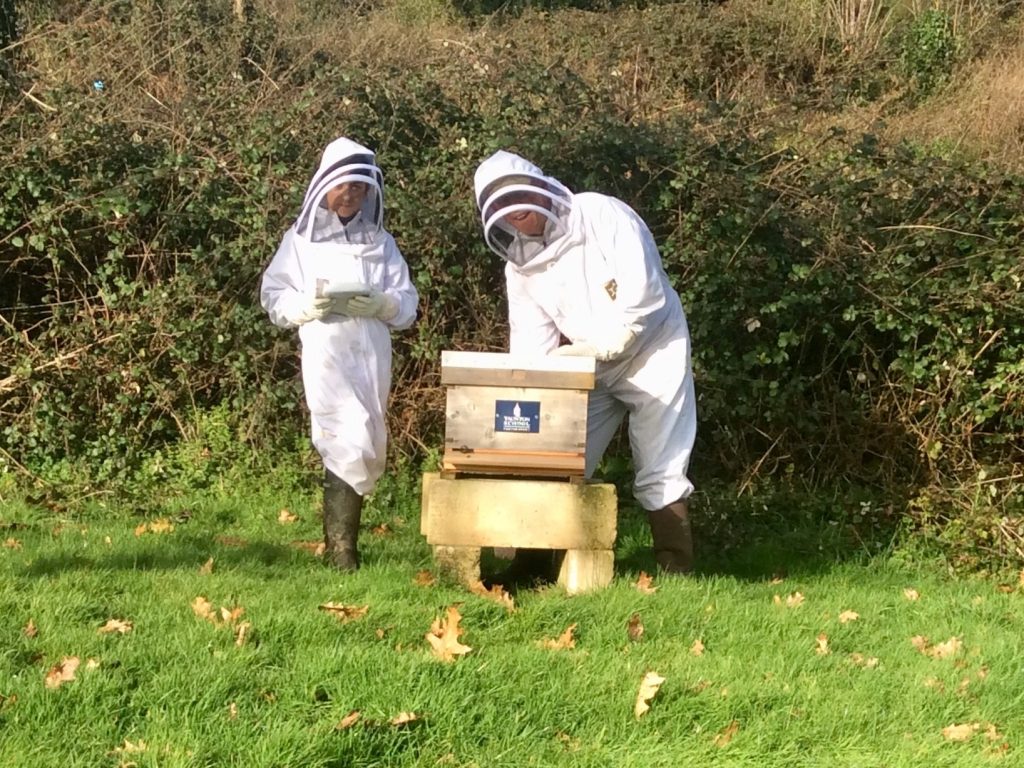One of the most important aspects of the winter survival of our bee colonies is knowing when and how to feed the bees in the winter.
Some beekeepers lose their hives in the winter and they blame the cold. Cold weather rarely is the cause of honey bees dying in the winter. They are more than able to make it through harsh British winter weather. The trick is to make sure there are adequate stores of honey and that the hives raise an abundance of new bees in the autumn. Bees raised in the autumn live 4-6 months and take the hive through winter, these bees have a winter physiology different to summer bees, who only live for around 40 days.
Bees don’t hibernate during the winter. They gather into a cluster in the centre of the hive and keep themselves warm and alive by contracting their muscles and sharing body heat. The minimum core temperature of a winter bee cluster is above 27 degrees C. Here in The Somerset Brendon Hills in winter, the difference between the outside air temperature and the temperature in the centre of the cluster can be an astounding -5 to 35 degrees C. Fuelling that enormous demand for energy is a diet of extremely concentrated carbohydrates, best found in honey.
By the end of January, long before the end of winter, the energy demands ramp up even further. By this time, the hive colony will have likely already started to raise brood. And unlike adults that can tolerate short periods of cooler temperatures, brood cannot. Brood requires almost constant 32-35 degrees C in order to survive and develop properly.
Since the new brood is often started long before there is any chance of foraging nectar & pollen outside, the strength of the first rounds of brood depends on what was stored in the hive the previous autumn. Even a moderate shortfall will reduce the size of the early brood numbers because fewer will survive to emerge as adults. That, in turn, plays out in successive rounds of new bees throughout the spring foraging & summer seasons. The first bees that emerge are thus replacements for the soon-to-die, over-wintered bees. If there are fewer early brood survivors, there will be fewer nurse bees to support the main build-up later on in the spring and eventually less honey to harvest in the late summer!
So, in late September, after the honey harvest, we feed the bees’ sugary syrup so they can replenish the honey stocks we have taken and sold in school. We check to make sure each hive had lots of capped brood in October and early November, numbers are healthy and that our bees are largely free of varroa mite, treating all hives regardless. We ‘heft’ the hive through autumn to estimate the weight of winter honey stores.
Experience gives us a feel that there is enough honey stores and how much additional syrup we should give them. Then in winter we try not to open the hive too often and then only on warm sunny days. After a cold spell like recently we heft the hive again & if we think it a little light we feed with fondant, a hard more solid food that winter bees can more easily digest. By doing this we hope our hives will remain strong in the remaining winter weeks. We help ensure there will still be a store of honey for the all-important new brood and that they will be ready for the spring and early summer foraging season.
Gabriel McCarthy & Mr McCarthy – Covid Lockdown Custodians of the Taunton School Beehives







